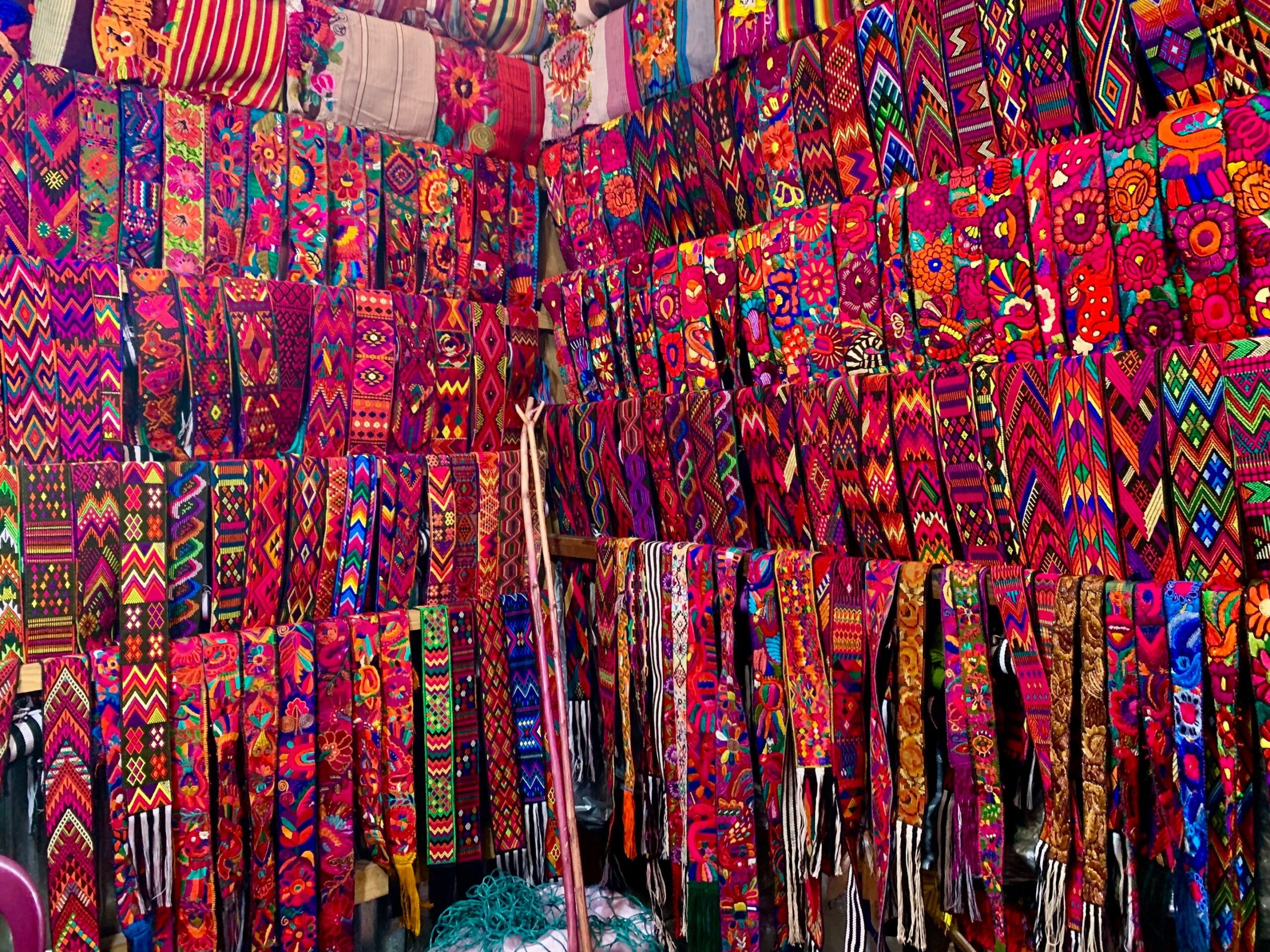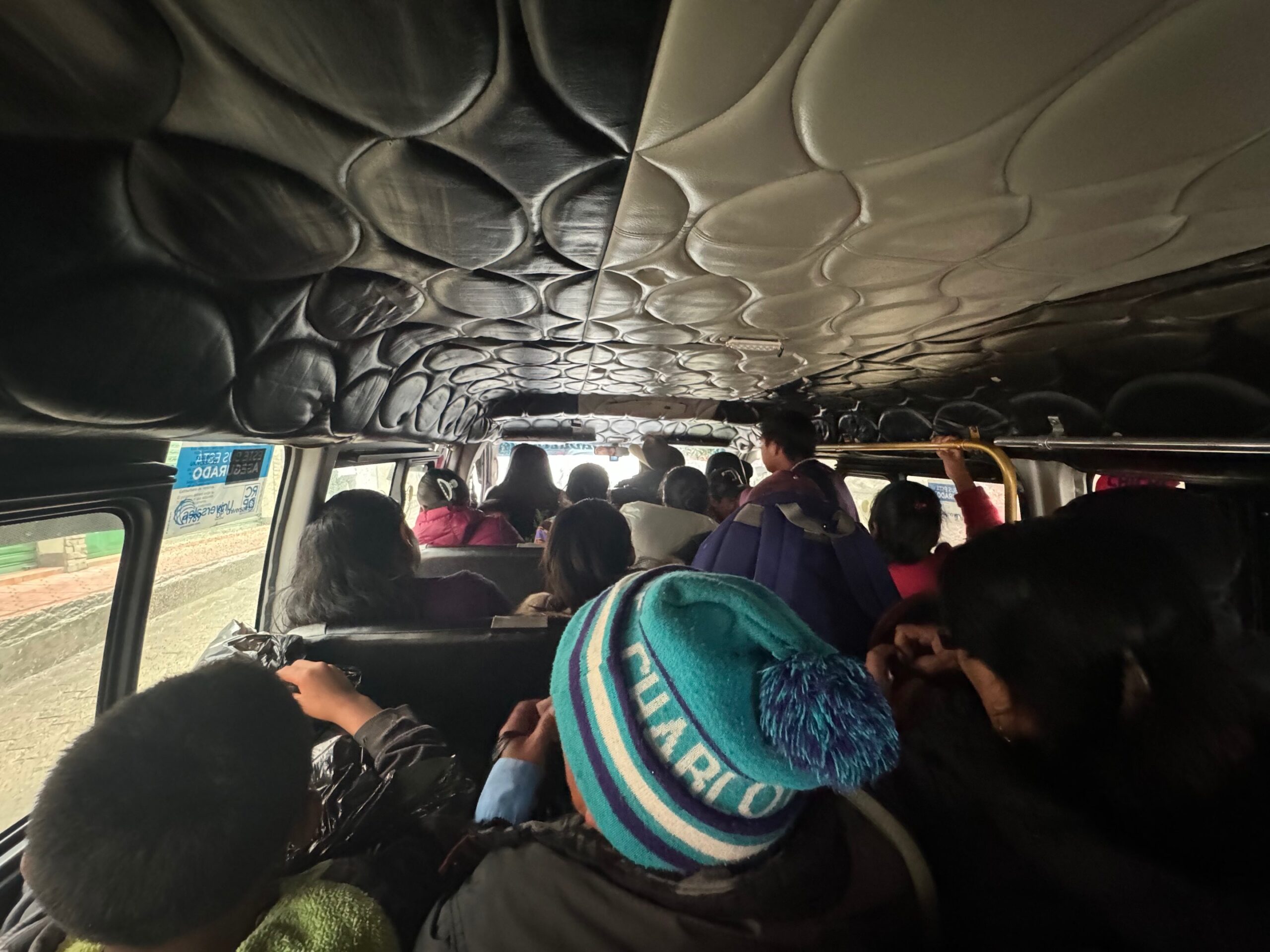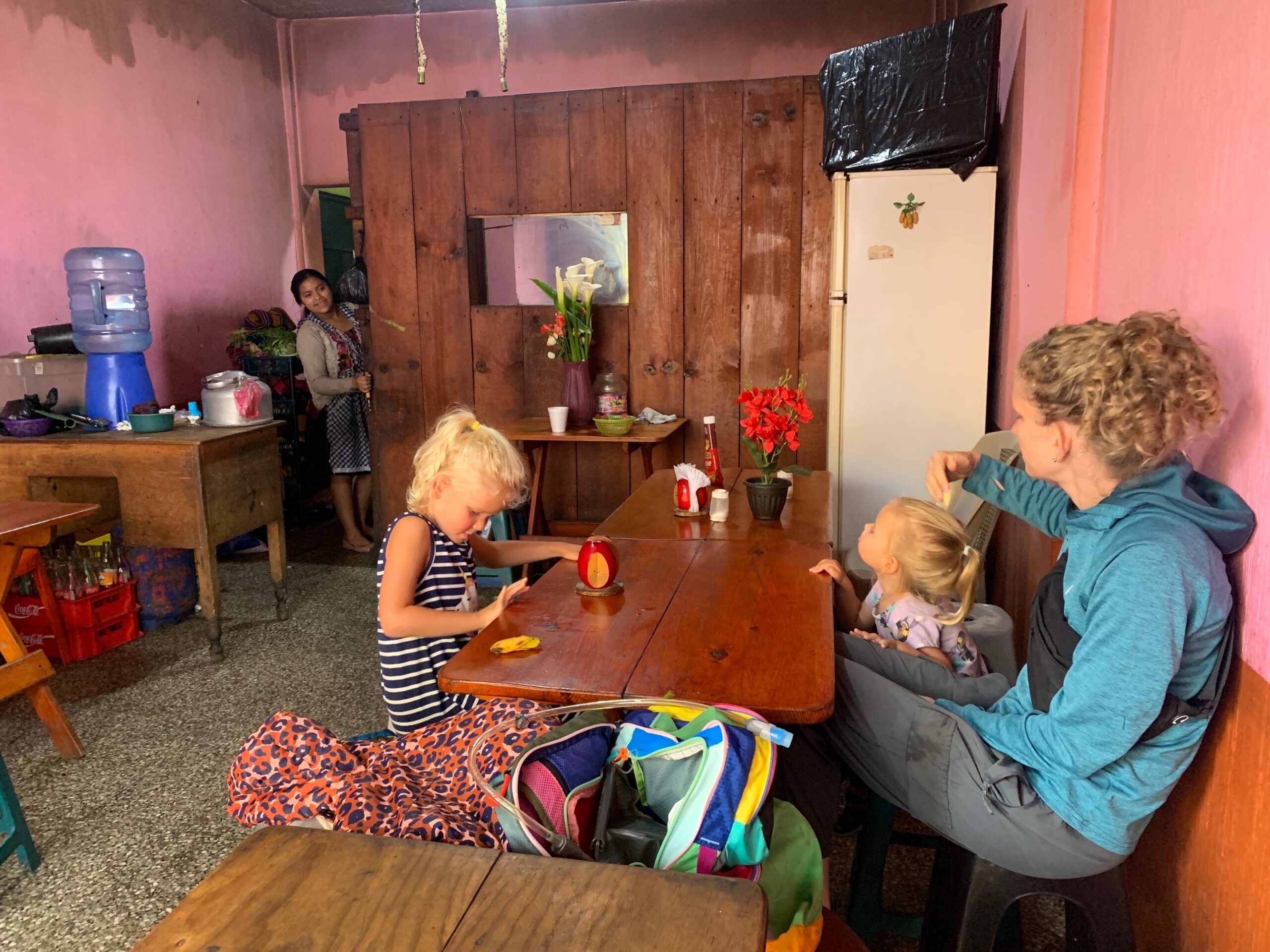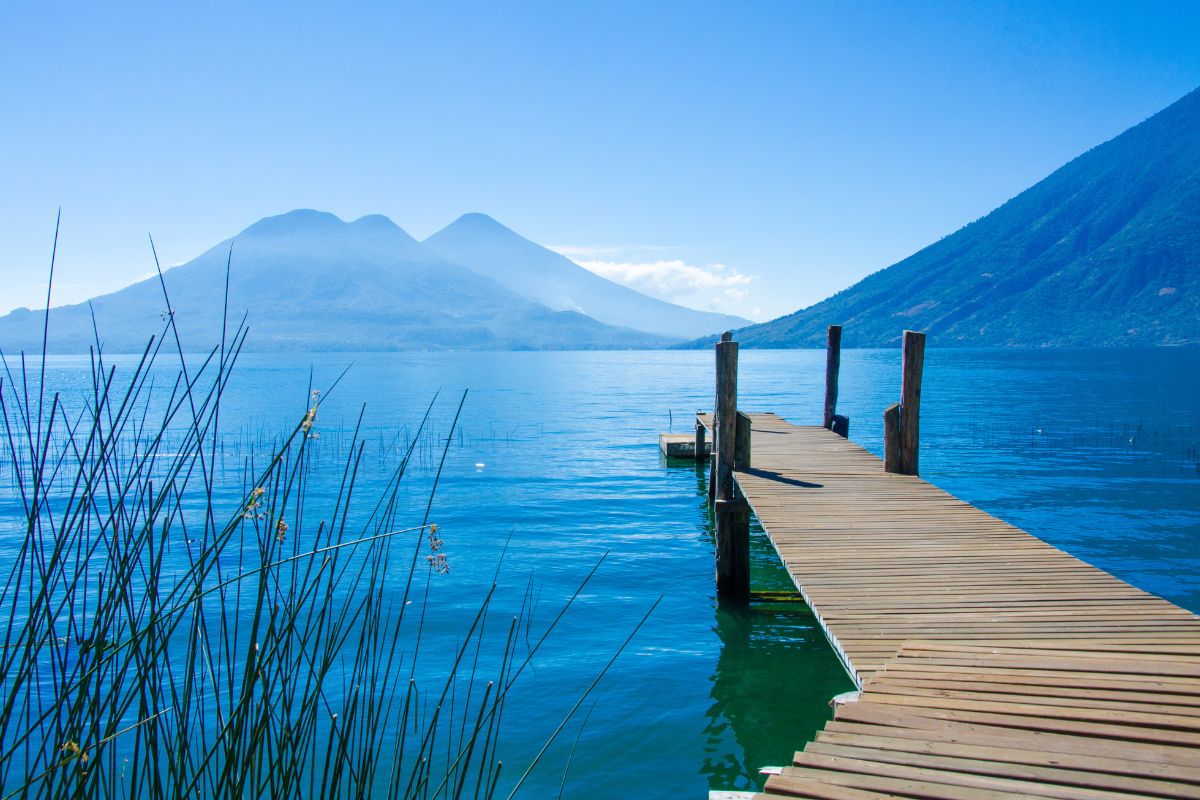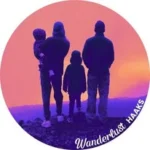Guatemala is full of cultural gems, but Chichicastenango Market—often called Chi Chi—is an experience unlike any other. As the largest open-air market in Central America, it’s a feast for the senses, overflowing with vibrant textiles, handcrafted goods, traditional Mayan artwork, and the rhythmic sounds of local vendors calling out their wares. If you’re traveling with kids, you might be wondering:
-
Is Chichicastenango Market kid-friendly?
-
Will it be overwhelming?
-
Is it worth the effort?
We asked all the same questions before going, and I’m here to tell you—it’s absolutely worth it. With some planning, patience, and the right mindset, you can turn this into an incredible cultural experience for your family. Here’s everything you need to know to make your visit stress-free and enjoyable.
Why Visit Chichicastenango Market with Kids?
Taking your kids to Chichicastenango Market is more than just a shopping trip—it’s a deep dive into Guatemala’s rich cultural heritage, traditional craftsmanship, and daily life of the Indigenous K’iche’ Maya people. Whether your family loves colorful markets, history, or simply exploring new places, Chi Chi offers an experience like no other.
What Makes Chichicastenango Market Unique Compared to Other Markets in Guatemala?
Chichicastenango Market is one of the most significant Indigenous markets in Central America, with a history dating back to pre-Columbian times. Unlike smaller town markets, which mostly cater to locals, Chi Chi attracts artisans and traders from across Guatemala—from the highlands of Huehuetenango to the shores of Lake Atitlán.
Here’s what sets it apart:
-
Historical Significance: The market has been a hub for trade for centuries, with families passing down artisan skills from generation to generation.
-
Authentic Mayan Presence: Many vendors wear traditional K’iche’ Maya clothing, and the market remains deeply tied to Mayan customs and spirituality.
-
Incredible Variety: You’ll find an unmatched selection of handwoven textiles, pottery, wooden masks, incense, medicinal herbs, and fresh produce—all in one place.
-
Spiritual and Cultural Traditions: Santo Tomás Church, located in the market square, is a sacred site where Mayan and Catholic rituals blend. You might even witness a traditional Mayan fire ceremony.
Is It a Good Place for Families, or Is It Too Crowded and Overwhelming for Kids?
Many parents worry about whether Chichicastenango Market is too chaotic for young children, and while it’s a busy place, it can be a wonderful family experience with the right preparation.
-
Best time to go: Arrive early in the morning (before 9 AM) to explore before the crowds peak.
-
Navigating the market: The narrow streets and packed stalls can feel overwhelming, but moving at a slow pace and taking breaks helps make the experience enjoyable.
-
Local hospitality: Guatemalans are incredibly welcoming toward families, and vendors are often excited to see children. Many will even engage with them by demonstrating weaving techniques or explaining their crafts.
-
A sensory wonderland: Kids who love colors, textures, and new sights will be fascinated by the vibrant stalls, handmade toys, and traditional garments.
If you have a toddler or baby, consider using a baby carrier instead of a stroller, as the uneven cobblestone streets and crowded alleys can be tricky to navigate.
What Cultural Experiences Can Kids Gain from Visiting?
A visit to Chichicastenango Market is a living history lesson that immerses kids in Mayan culture.
-
Weaving Demonstrations: Many textile vendors set up their backstrap looms right in their stalls, allowing kids to see firsthand how intricate patterns are woven by hand.
-
Traditional Bartering: Bargaining is part of the shopping experience here. If your child is old enough, encourage them to ask a vendor about an item and practice negotiating—it’s a great hands-on learning opportunity.
-
Mayan Rituals and Ceremonies: Outside Santo Tomás Church, families might witness Mayan priests performing fire ceremonies, blessing offerings, or burning incense—a tradition that has continued for centuries.
-
Trying Local Foods: The market is a great place to introduce kids to Guatemalan flavors. Vendors sell fresh tropical fruit, homemade tortillas, tamales, and atol (a warm, sweet corn drink).
For older kids, discussing the historical importance of the market and the resilience of Indigenous communities adds a deeper layer of understanding.
Walking Through the Market
When Is the Best Time to Visit Chichicastenango Market?
Chichicastenango Market is open twice a week, and picking the right day and time can make a big difference—especially when visiting with kids. While the market is always lively, some days and hours are more family-friendly than others.
What Are the Market Days, and Is One Better for Families?
Chichicastenango Market runs every Thursday and Sunday, filling the town with vendors, shoppers, and cultural energy.
Thursday Market
-
Less crowded compared to Sunday.
-
A great option for first-time visitors or families with younger children who may get overstimulated.
-
Vendors are still fully stocked, offering the same variety of goods as Sundays.
-
You’ll have more space to explore at a slower pace without feeling rushed.
Sunday Market
-
The biggest market day, drawing more vendors and visitors from across Guatemala.
-
The atmosphere is more festive and energetic, with more Mayan ceremonies and a greater variety of goods.
-
It can get very crowded by midday, making it harder to navigate with small kids.
-
A fantastic day for experiencing the full cultural immersion of Chichicastenango.
Which day should you choose?
-
If you’re traveling with young kids or prefer a quieter, more manageable visit, Thursday is the better option.
-
If your family loves bigger crowds, more excitement, and a full cultural experience, Sunday is worth it—just plan accordingly.
What Is the Best Time of Day to Go with Young Kids?
No matter which day you visit, timing is key to avoiding the biggest crowds and making your visit more enjoyable.
Ideal Time to Arrive
-
Early morning (before 9 AM) is the best time to visit with kids.
-
Vendors start setting up as early as 6 AM, so arriving between 7–9 AM gives you plenty of time to explore before the market gets packed.
-
By midday (12–2 PM), the market is at its busiest. The narrow streets become congested, and navigating with little ones can feel overwhelming.
Why Early Morning is Best for Families
-
Cooler temperatures (especially helpful if traveling with toddlers or babies).
-
More space to move around, making it easier to shop and explore at a relaxed pace.
-
Vendors are well-stocked, so you get the best selection before items sell out.
-
Easier bartering—some vendors offer better deals earlier in the day to secure their first sales.
Pro Tip: If you can’t arrive early, consider going after 3 PM, when the crowds start to thin out. However, some vendors begin packing up by late afternoon, so options may be more limited.
What to Expect at Chichicastenango Market: Sights, Sounds & Atmosphere
Walking into Chichicastenango Market is like stepping into a vibrant, living painting. The streets are lined with stalls bursting with color, while the scent of fresh tortillas, incense, and spices fills the air. Vendors call out in Spanish and K’iche’ (the local Mayan language), inviting shoppers to explore their handcrafted goods.
For families, the market is a mix of excitement and sensory overload, but with the right approach, it can be an unforgettable experience for kids.
Textiles
How Big Is the Market, and What Can Families Expect to See?
Chichicastenango Market is massive, covering most of the town’s central streets, plazas, and even side alleys. The market is so large that it completely transforms the town on Thursdays and Sundays, attracting vendors and shoppers from all over Guatemala.
What You’ll See in the Market:
-
Textile stalls with beautifully woven huipiles (traditional blouses), blankets, scarves, and table runners.
-
Hand-carved wooden masks used in traditional Mayan dances.
-
Brightly painted pottery with intricate floral and geometric patterns.
-
Mayan ceremonial incense (pom) and candles, commonly used in rituals.
-
Vibrant bags, purses, and belts made from handwoven fabrics.
-
Local produce and spices, including fresh tortillas, tropical fruits, and bags of fragrant cacao beans.
-
Street food vendors grilling corn, serving tamales, and offering atol (a traditional warm corn drink).
Pro Tip: Even if you’re not planning to buy anything, browsing the stalls is an experience in itself. Vendors are friendly and welcoming, and many are happy to share the stories behind their crafts.
Is It Loud and Chaotic, or Manageable for Parents with Small Children?
Chichicastenango Market is bustling, but it’s not unmanageable—especially if you go early in the morning. The busiest time is between 10 AM and 2 PM, when the narrow streets get packed with tourists and locals.
Tips for Navigating the Market with Kids:
-
Go early (before 9 AM) to experience a more relaxed atmosphere.
-
Stay near the edges of the market if you need a quieter space. The side streets and alleys tend to be less congested.
-
Take breaks in the food sections, which are less chaotic and have places to sit.
-
Hold hands or use a baby carrier, as strollers can be difficult to maneuver on the cobblestone streets.
Quieter Areas for Families
-
The church steps at Santo Tomás Church – A great spot to sit and observe.
-
The indoor produce market – Less crowded, with fresh fruit and prepared foods.
-
Cafés near the market – Perfect for a short break.
Overall, Chichicastenango Market is lively but not overwhelming if you plan ahead. It’s a fun, engaging environment for kids, full of colors, music, and friendly locals.
Traditional Textile Making
What Kind of Items Might Interest Kids?
While much of the market caters to adults, there are plenty of kid-friendly souvenirs and fun discoveries along the way.
Best Finds for Kids:
-
Mini handwoven dolls – Small, colorful, and great for imaginative play.
-
Colorful worry dolls – A traditional Guatemalan toy. According to legend, kids can whisper their worries to the dolls at night, and the worries will disappear by morning.
-
Wooden animal masks – Vibrant masks used in traditional Mayan festivals. These come in small sizes perfect for kids’ rooms or playtime.
-
Handmade wooden instruments – Small maracas, flutes, and drums that kids will love.
-
Miniature woven bags and coin purses – Perfect for little travelers to carry their own “treasures.”
-
Mayan-inspired puzzles and carved wooden toys – Fun and educational souvenirs.
-
Small stuffed animals made from Guatemalan textiles – Soft and colorful, often shaped like jaguars, birds, or traditional figures.
Many vendors enjoy interacting with children, and some will even demonstrate how their crafts are made, turning your visit into a hands-on learning experience.
Pro Tip: Let your child pick out one small souvenir and practice bartering—vendors often enjoy engaging with kids in the process!
Van from Los Encuentros to Chichicantenango
How to Get to Chichicastenango Market with Kids
You don’t need a tour! Getting there yourself is part of the adventure and quite manageable.
What’s the best way to get there with kids?
-
From Lake Atitlán → Take a public boat (lancha) to Panajachel.
-
In Panajachel → Get a chicken bus to Sololá (20 mins, Q5).
-
From Sololá → Take another bus to Los Encuentros (Q5).
-
Los Encuentros → Take a van to Chichicastenango (Q7–10, ~40 mins).
Pro Tip: Mark your drop-off point in Google Maps so you can easily find your way back!
What to Pack for a Visit to Chichicastenango Market with Kids
What essentials should parents bring?
-
A baby carrier (strollers aren’t ideal).
-
Snacks & water (hydration is key!).
-
A small umbrella or rain jacket (weather can be unpredictable).
-
Hand sanitizer & wipes.
Shopping at Chichicastenango Market: What to Buy & How to Bargain
What are the best souvenirs?
-
Handwoven blankets, ponchos, and table runners
-
Wooden masks & Mayan artwork
-
Local coffee & chocolate
Unnamed Restaurant in Chichi Market
Kid-Friendly Food & Snacks to Try at Chichicastenango Market
One of the best parts of visiting Chichicastenango Market is the food. From fresh tropical fruits to traditional Guatemalan dishes, there’s plenty for families to enjoy. The good news? Many local foods are mild, flavorful, and kid-friendly.
If your children love trying new flavors, they’ll be delighted. If they’re picky eaters, don’t worry—there are plenty of simple and familiar options like rice, beans, and fresh fruit.
What Local Foods Are Safe and Fun for Kids?
Here are some of the best Guatemalan foods at Chichicastenango Market that kids can enjoy.
1. Fresh Fruit Cups
One of the easiest and safest snacks to grab is a cup of fresh-cut fruit, which vendors sell throughout the market. You’ll find:
-
Mango – Sweet and juicy, often served sliced or on a stick.
-
Papaya – Mild and refreshing, with a soft texture.
-
Pineapple – Naturally sweet and tangy, perfect for hot days.
-
Bananas – A familiar favorite for kids.
-
Watermelon – Hydrating and easy to eat.
Pro Tip: If you prefer to avoid pre-cut fruit, buy whole fruits from vendors and peel or cut them yourself. Always choose fruit with unbroken skin to minimize risk.
2. Tamales (Mild and Delicious)
Tamales are a staple of Guatemalan cuisine and a fantastic meal for kids because they are:
-
Soft and easy to eat (great for toddlers and young children).
-
Mild in flavor, especially the classic versions.
-
Filling and nutritious, made with corn masa and various fillings.
The most kid-friendly tamales include:
-
Tamales de Pollo – Made with chicken and wrapped in banana leaves.
-
Tamales de Elote – Sweet corn tamales, soft and naturally sweet.
-
Tamales de Frijol – Filled with mashed black beans for a simple, savory option.
Tamales are usually served without spicy sauces, making them safe for kids. However, always check with the vendor before buying to ensure they’re mild.
3. Rice & Beans with Handmade Tortillas
This is one of the simplest and most comforting meals you can find at the market. Many small food stalls serve:
-
Arroz y Frijoles – White or red rice with black beans.
-
Frijoles Volteados – Refried black beans, served with warm tortillas.
-
Tortillas Hechas a Mano – Handmade corn tortillas, freshly pressed and cooked on a traditional comal (griddle).
Pro Tip: Guatemalan tortillas are slightly thicker and more flavorful than store-bought ones in the U.S. Kids love watching the tortilla-making process, so stop by a stall where women are hand-pressing tortillas—it’s fascinating to watch!
4. Elotes Locos (Corn on the Cob with Toppings)
For a fun street food snack, try elote loco (crazy corn). This is:
-
Grilled or boiled corn on the cob, served on a stick.
-
Usually topped with mayo, cheese, lime, and chili powder (ask for plain corn for kids).
-
A great on-the-go snack that’s easy to hold and eat.
If your kids aren’t fans of toppings, you can ask for “solo con sal y limón” (just salt and lime).
Food Safety Tips for Families at Chichicastenango Market
Eating street food with kids can be a great experience, but it’s important to take precautions to avoid stomach issues.
-
Look for stalls that have a high turnover – Freshly cooked food is safest.
-
Stick to foods that are hot and cooked on the spot – Avoid anything that has been sitting out for a long time.
-
Bring your own utensils or wipes – Vendors often provide plastic utensils, but a quick wipe-down is a good habit.
-
Buy whole fruit instead of pre-cut – If you’re worried about water contamination, buy bananas, mangoes, or oranges and peel them yourself.
-
Drink bottled water – Avoid drinks with ice, as tap water in Guatemala is not safe to drink. You may also bring your own re-usable water reservoir.
Final Thoughts
Chichicastenango Market isn’t just a shopping destination—it’s a cultural experience that immerses your family in the heart of Guatemala’s traditions. With a little planning and an open mind, it can be one of the most rewarding adventures of your trip.
More on the Blog:
Want to know where to stay in Lake Atitlán?
Check out how much we spent while staying in 2 weeks in Lake Atitlán.



